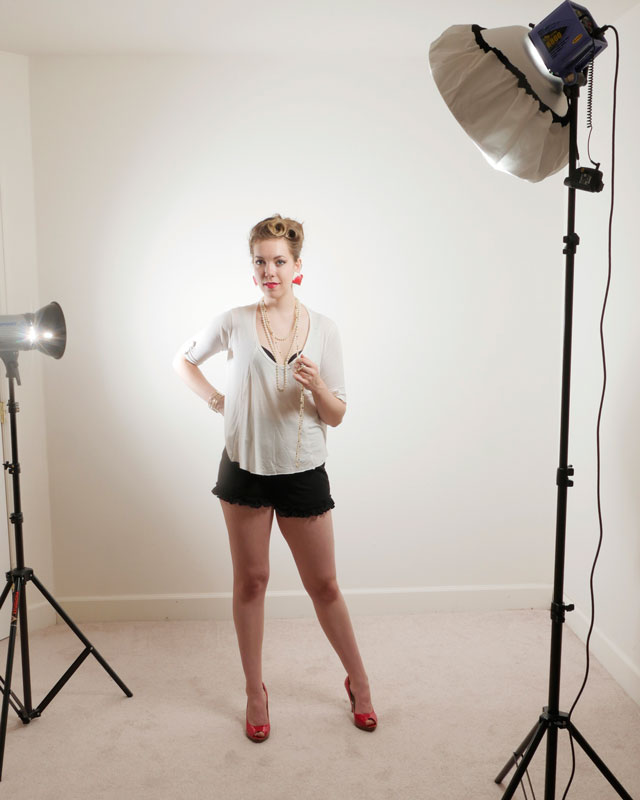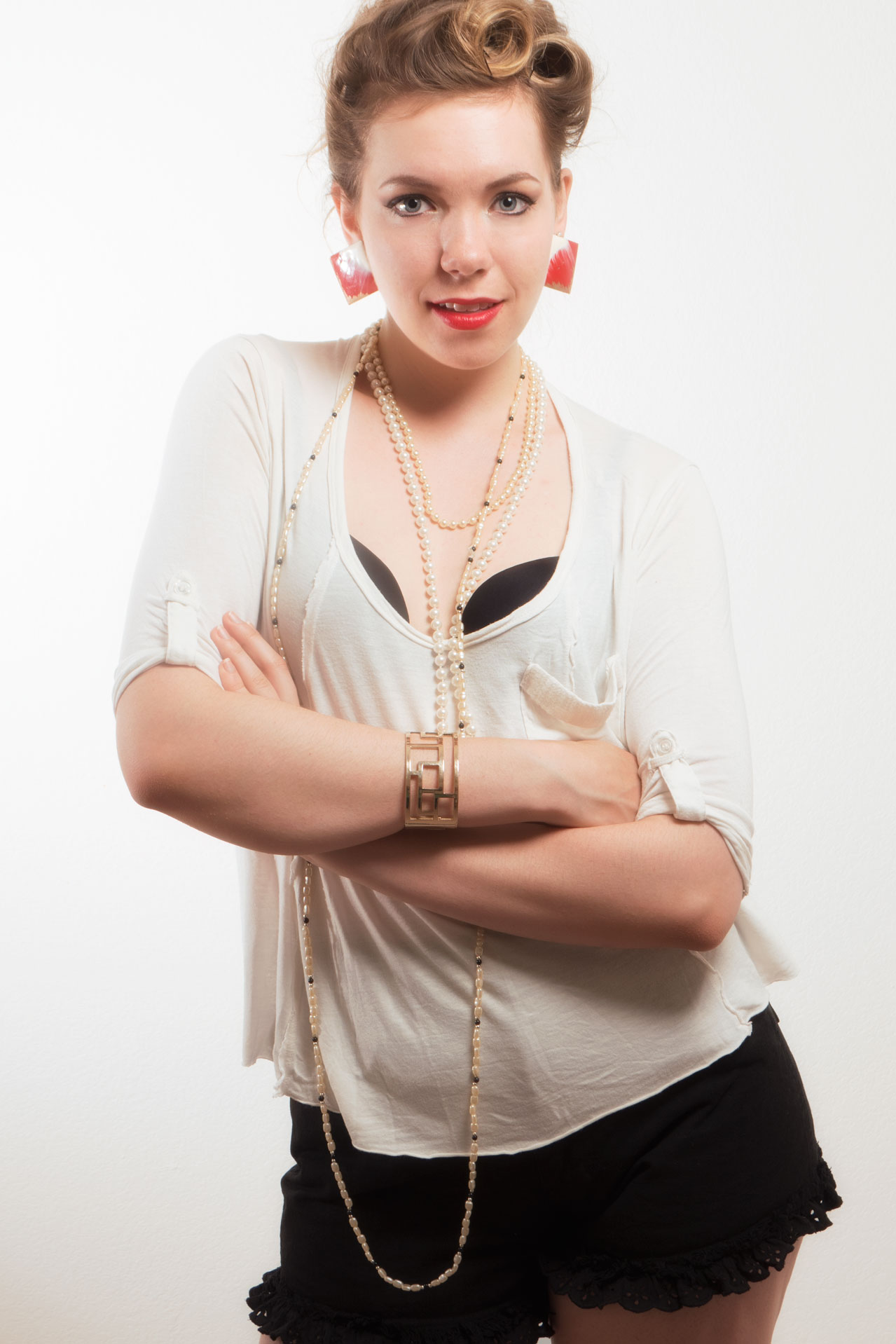Today’s Post by Joe Farace
 There are lots of things you’ll have to consider when working in your home studio beginning with tailoring its possibilities to the available space. In turn, that space will help determine the kind of lenses and the focal lengths you’ll be able to use but what about your subject? You’ll need to work with them in the space set aside and place them in poses to get the best possible photographs but even more importantly is making it comfortable for your subjects. If they aren’t comfortable in your set up it will difficult to get them to relax and, in turn, produce the best expressions.
There are lots of things you’ll have to consider when working in your home studio beginning with tailoring its possibilities to the available space. In turn, that space will help determine the kind of lenses and the focal lengths you’ll be able to use but what about your subject? You’ll need to work with them in the space set aside and place them in poses to get the best possible photographs but even more importantly is making it comfortable for your subjects. If they aren’t comfortable in your set up it will difficult to get them to relax and, in turn, produce the best expressions.
How I made this shot: In the lighting setup at right, I used a Paul C Buff B800 Purple Haze Alien Bee monolight as the key light that was placed at camera right. I mounted an OMNI 18-inch reflector on it stretched the bundled diffusion sock over the reflector. A second monolight was set at full power and placed at camera left and behind the model pointing at the wall* in my 11×15-foot home studio to illuminate it and contribute to the portrait’s high key look.
 This pseudo high key shot of Sarah was made using the lighting setup shown above and was shot using a Panasonic Lumix GH4 with Lumix G Vario 14-42mm f/3.5-5.6 lens (at 29mm) with an exposure of 1/125 sec at f/8 and ISO 200. Originally captured as a RAW file, it was retouched and then processed in Color Efex Pro
This pseudo high key shot of Sarah was made using the lighting setup shown above and was shot using a Panasonic Lumix GH4 with Lumix G Vario 14-42mm f/3.5-5.6 lens (at 29mm) with an exposure of 1/125 sec at f/8 and ISO 200. Originally captured as a RAW file, it was retouched and then processed in Color Efex Pro
One of the most common mistakes that I see in some home studio portraits is using too short a focal length lens. Tip: I try to use to longest focal length possible, indoors and outdoors, because I like the more natural perspective that it produces. The 29mm length used for this portrait is a 58mm equivalent.
As always in my blog posts, this is what I like; you can choose to use this tip or ignore it. If you and your customers are happy with the images, that’s all that matters.
*As part of the repairs after the flood in my basement, the studio’s walls were painted Sherwin-William Lazy Gray, a tint somewhere between Zone V and VI on Ansel Adam’s zone scale, so this particular lighting technique is no longer an option. An alternative that will work perfectly is Savage’s Translum background. Follow the link for examples.
 If you enjoyed today’s blog post and would like to buy Joe a cup of Earl Grey tea ($2.50), click here. And if you do, thank so very much.
If you enjoyed today’s blog post and would like to buy Joe a cup of Earl Grey tea ($2.50), click here. And if you do, thank so very much.
If you’re interested in learning how I shoot portraits and how I use cameras, lenses and lighting in my in-home studio and on location, please pick up a copy of Studio Lighting Anywhere which is available new from Amazon.com for $17.07 or starting at the bargain price of $5.52 used, as I write this. Kindle version is $11.99.